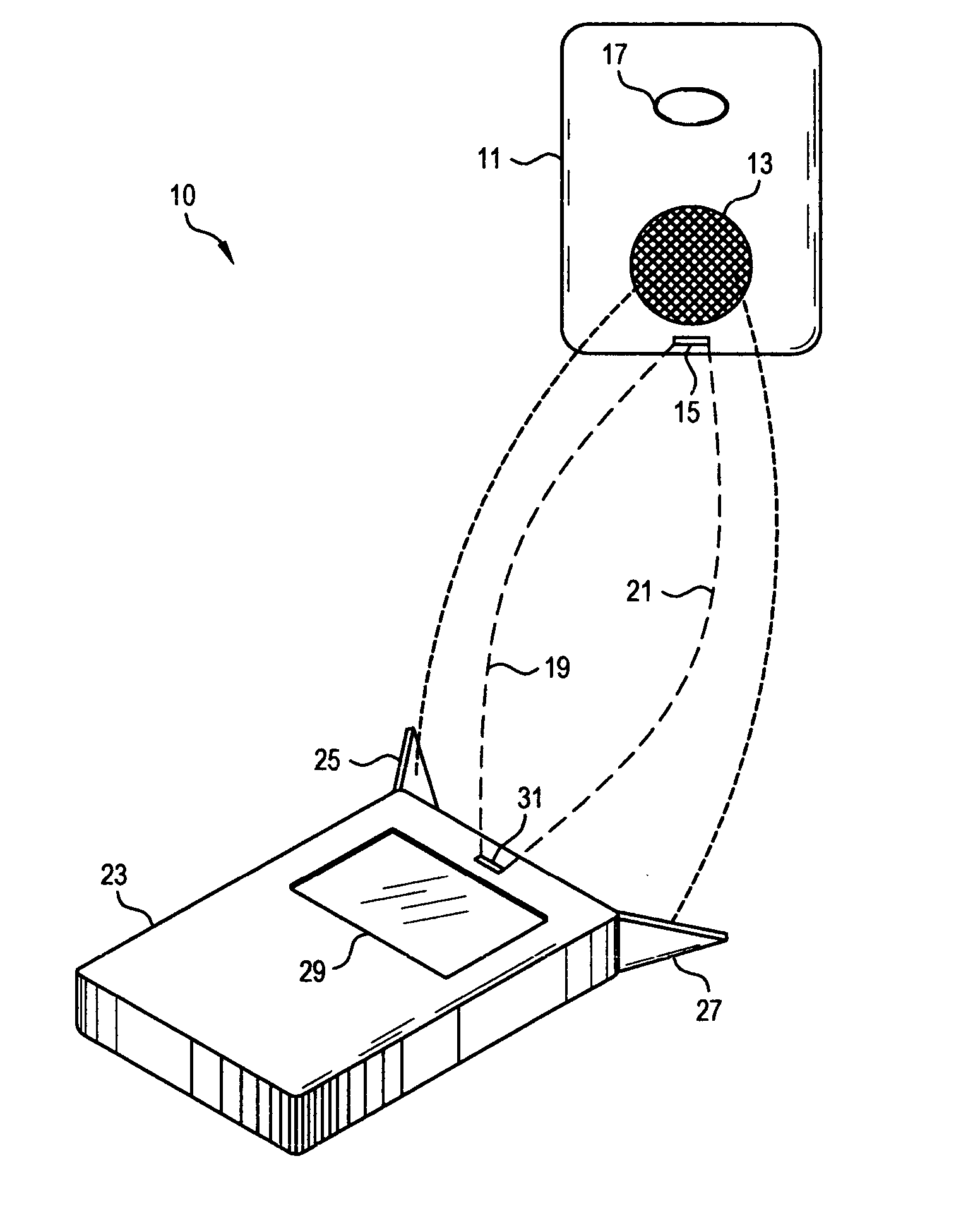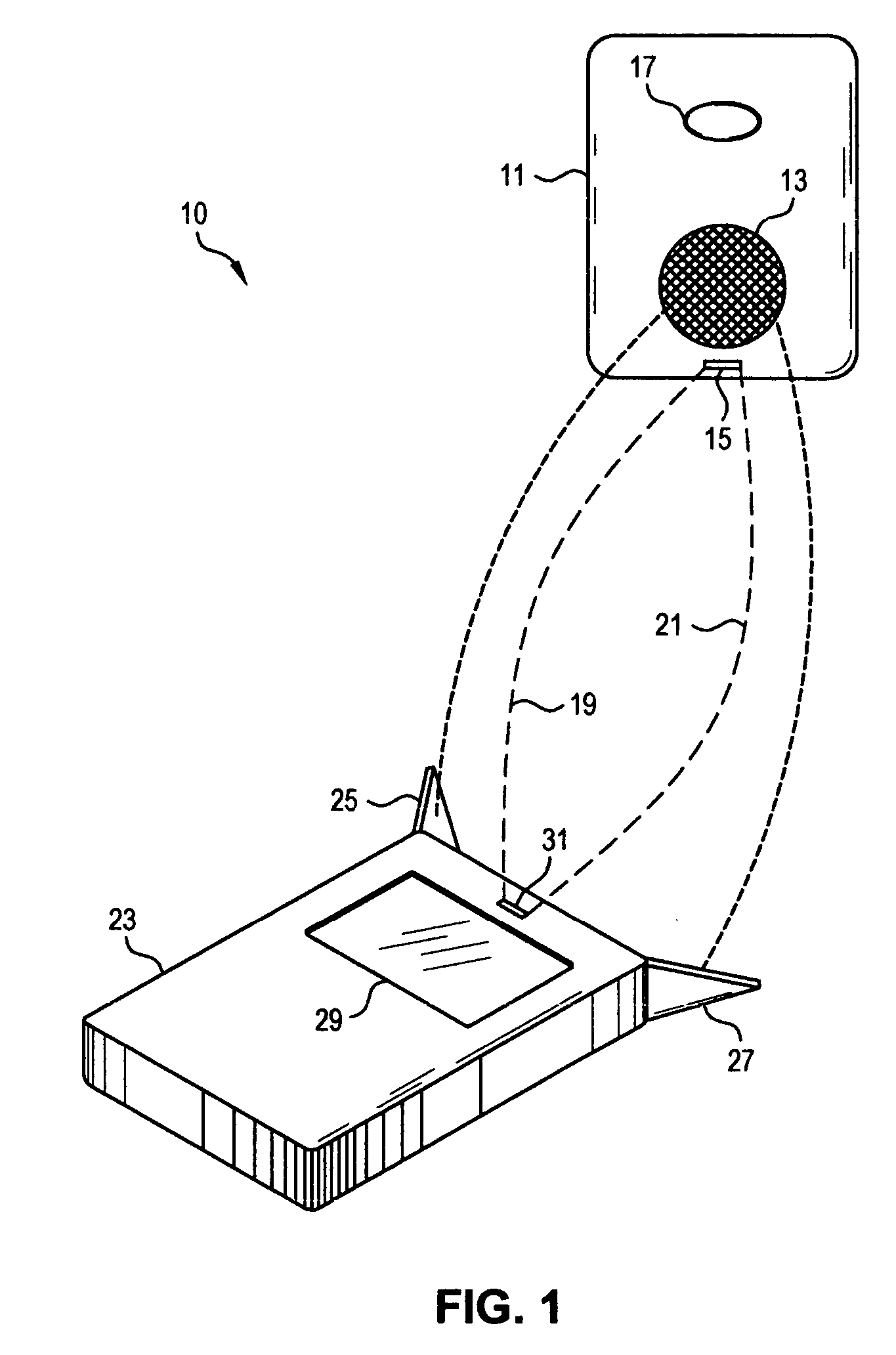RF/acoustic person locator system
a locator system and acoustic technology, applied in the direction of electric signalling details, instruments, using reradiation, etc., can solve the problems of insufficient acoustic alarm, smoke and fire can obscure the rescuer's vision, and the first responder experiences danger and difficulty
- Summary
- Abstract
- Description
- Claims
- Application Information
AI Technical Summary
Benefits of technology
Problems solved by technology
Method used
Image
Examples
Embodiment Construction
[0015] The present invention provides for substantial improvements in rescue systems such as fire fighting environments where there has been a significant amount of visual impairment. It is an improvement on systems that depend solely on acoustic noise that can be heard. The present invention eliminates or substantially reduces the confusion of a rescue situation that often renders the acoustic alarm alone as insufficient. This invention provides the precise distance and direction to the fallen first responder or other individual to make rescue efforts faster and safer.
[0016] As shown in FIG. 1, the system, 10 generally, includes a transmitting device 11 such as an enhanced personal alarm sounder or PAS is to be attached to the uniform of each first responder or other person of interest. Transmitting device 11 has an acoustic speaker 13, a RF signal transmitter 15 and an actuator button 17. Actuator button 17 includes a sensor device that detects lack of motion and turns on actuato...
PUM
 Login to View More
Login to View More Abstract
Description
Claims
Application Information
 Login to View More
Login to View More - R&D
- Intellectual Property
- Life Sciences
- Materials
- Tech Scout
- Unparalleled Data Quality
- Higher Quality Content
- 60% Fewer Hallucinations
Browse by: Latest US Patents, China's latest patents, Technical Efficacy Thesaurus, Application Domain, Technology Topic, Popular Technical Reports.
© 2025 PatSnap. All rights reserved.Legal|Privacy policy|Modern Slavery Act Transparency Statement|Sitemap|About US| Contact US: help@patsnap.com


